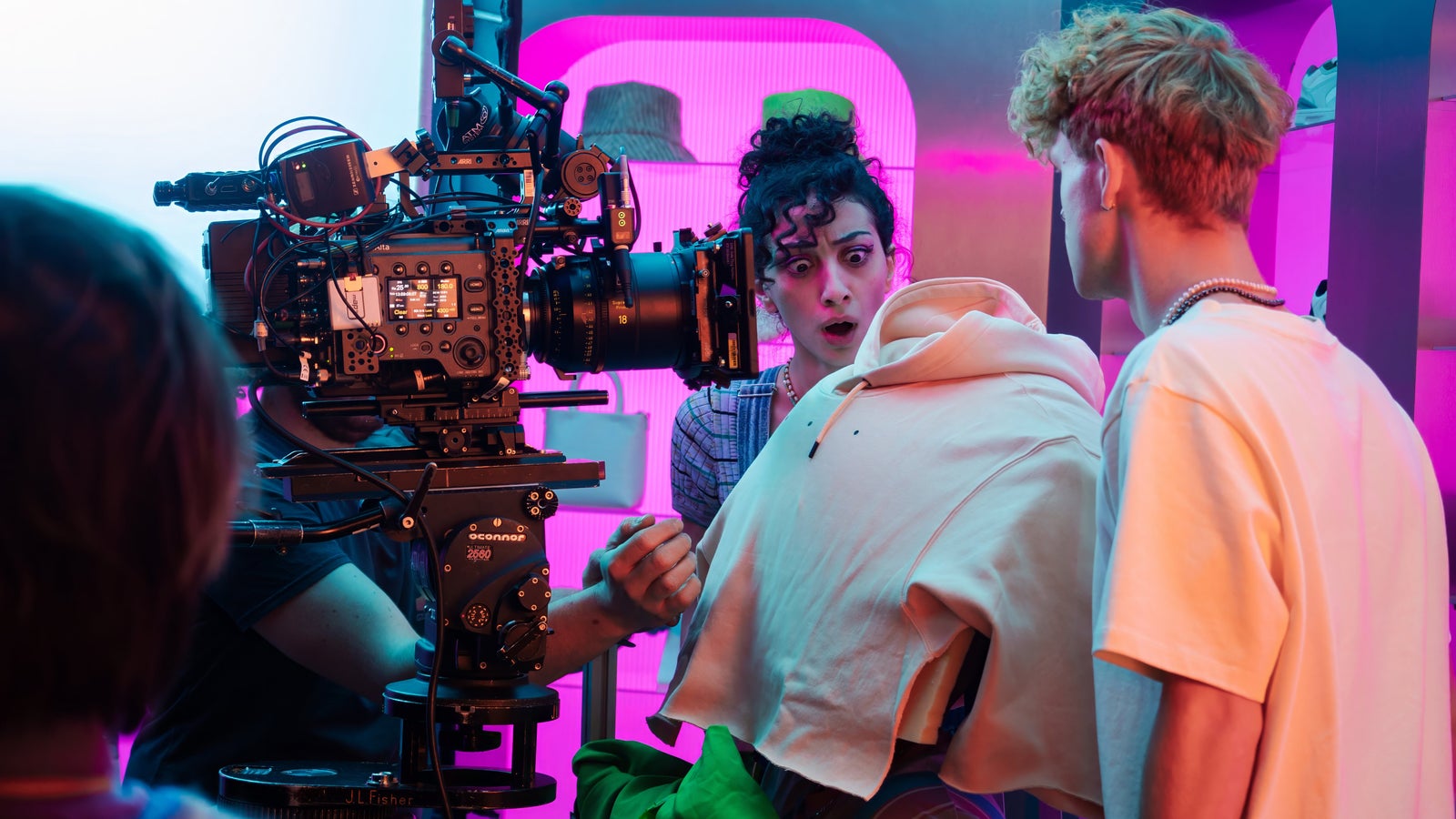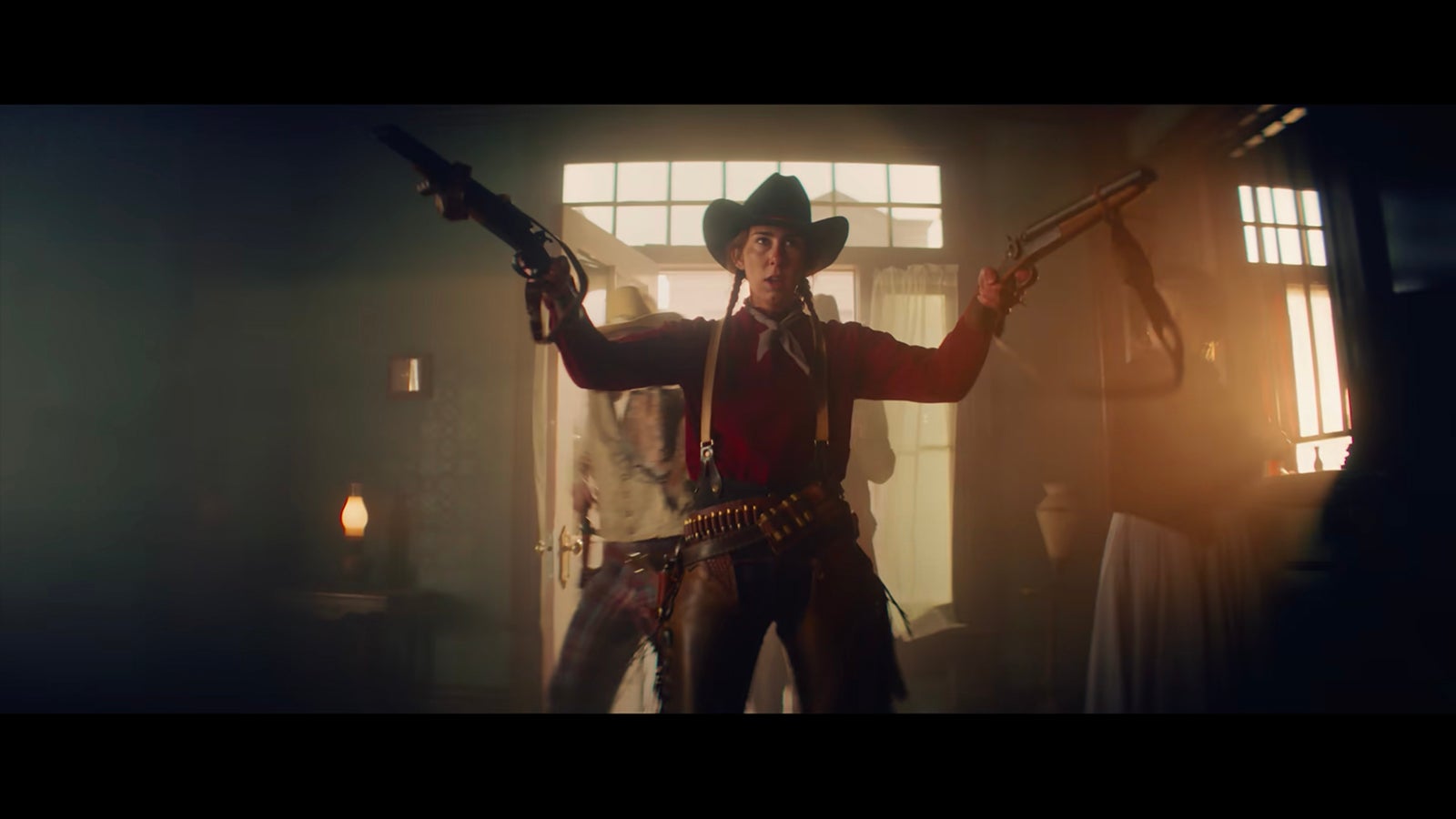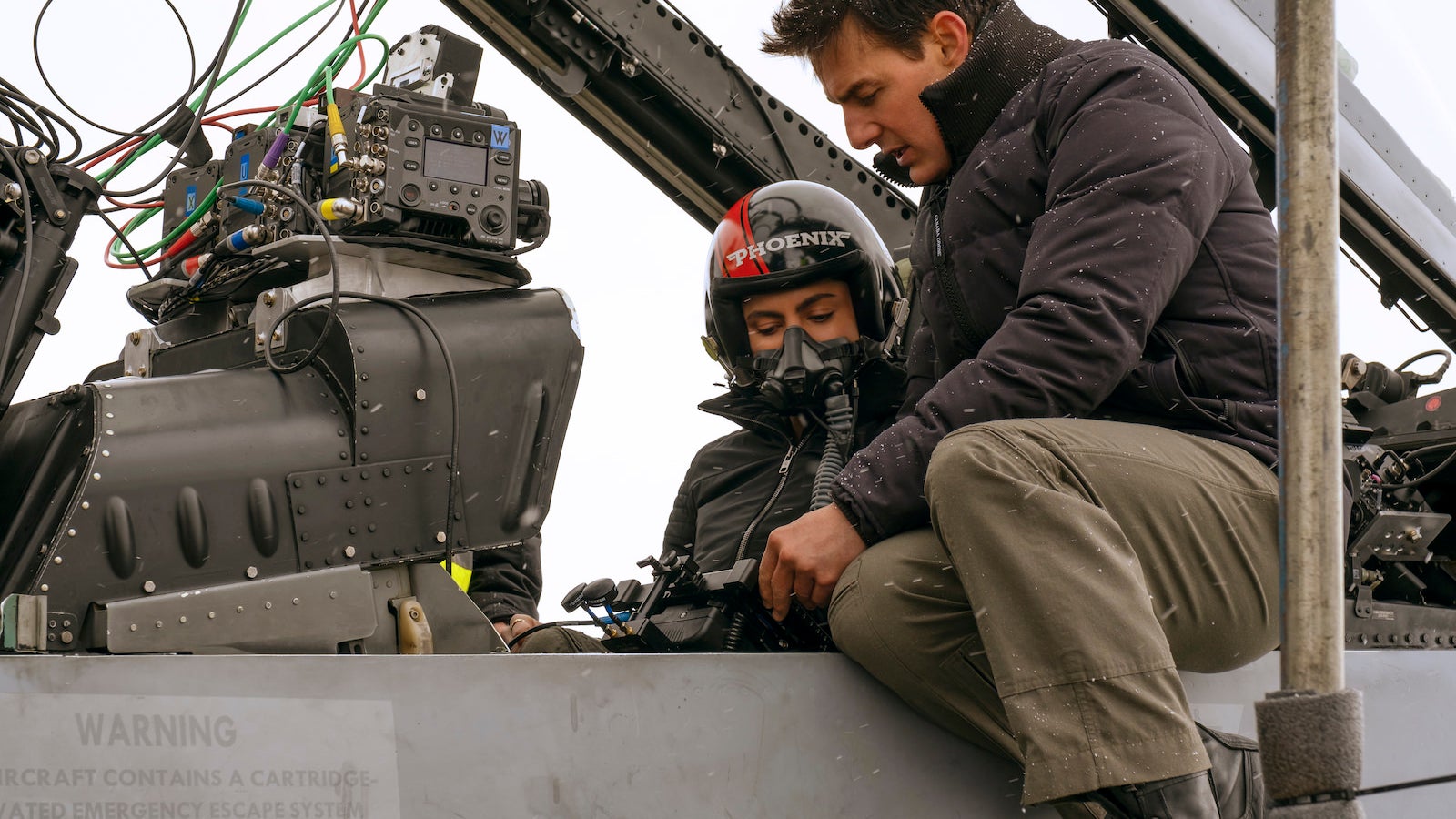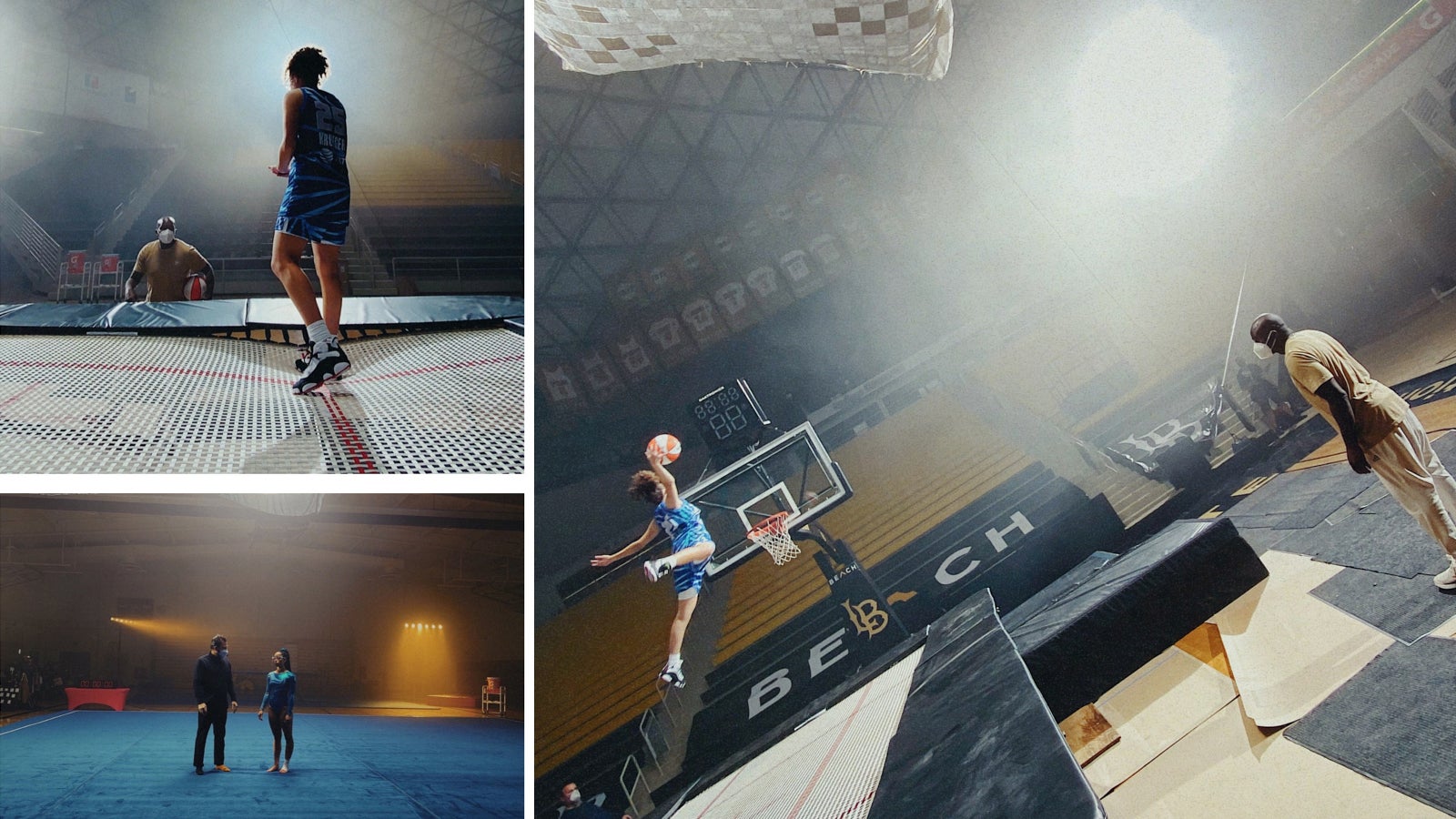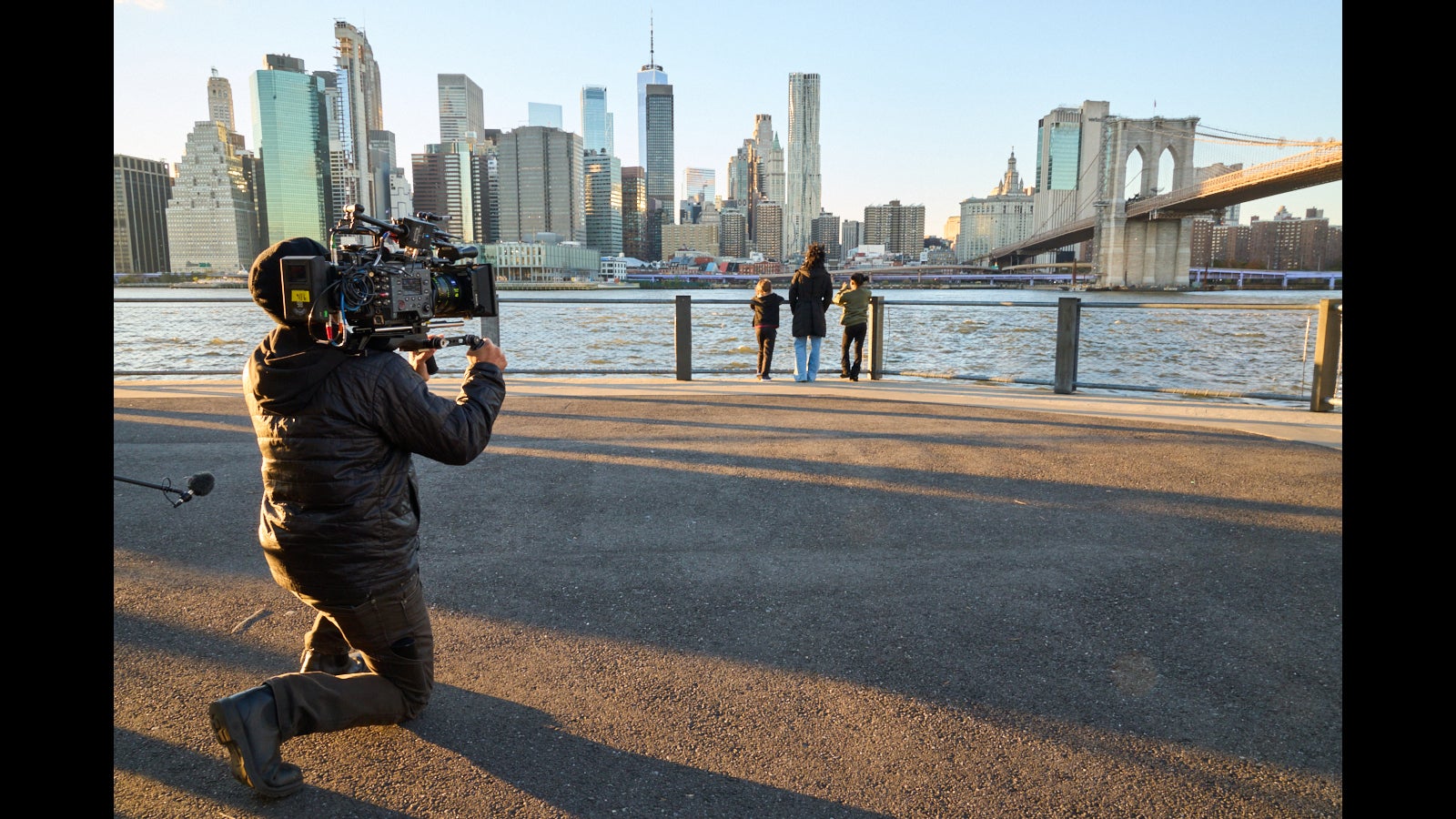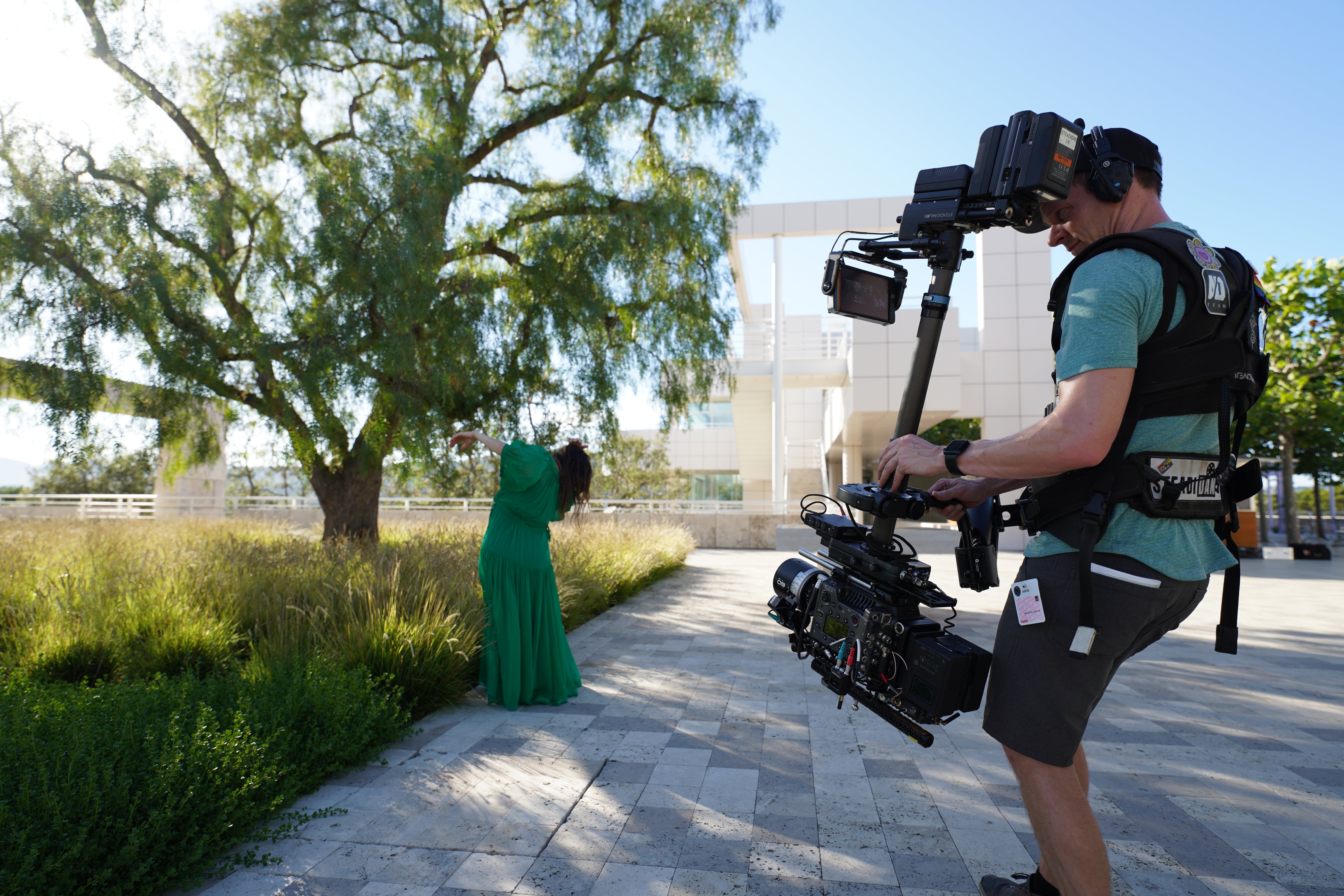
09-24-2024 - Filmmaker Interviews
Sony VENICE 2 Behind the Scenes Video: Oren Soffer
By: Yaroslav Altunin
When interviewing cinematographers, directors, and writers about their craft and the things they create, the conversation always begins from a place of art. The movies we all make start as ideas of art and emotion. Discussing the hardware is always saved for later.
But making films requires technological tools. Without them, our movies would forever remain as ideas of art and emotion. Bridging the gap between the technology we use and our stories takes expertise, knowledge, and freedom.
To better understand this bridge, Director of Photography Oren Soffer and Director Andrew Kightlinger joined forces to discover what the Sony VENICE 2 could achieve as a tool when fed this art and emotion.
What they created was a dance-focused short titled Becoming. With it, they discovered an ability to cross this bridge and create without limitation.
Becoming: It's About Art. It's About Creation.
When asked to explore the Sony VENICE 2 as a cinema toolkit, Soffer and Kightlinger wanted to craft something without the burden of a full-sized production. They wanted freedom while trying to craft something worthy of cinema. This meant having a small crew, no lighting equipment, and a story centered around creative expression.
For their foundation, Soffer and Kightlinger chose dance, an expressive art form that can tell stories without words. Partnering with contemporary dancer Daphne Fernberger of LA Dance Project and composer Michael Gregorio, the team was invited to the Getty Center to shoot on location.
"I just finished making a feature," Kightlinger said. "Which was a joy. I loved doing it, and I'm very proud of the movie, but (Becoming) was a way to express ourselves organically without parameters."
"What can we create that's short and visually driven?” Soffer added. “That we can do in one day that showcases the camera and its capabilities.”
"I wanted to tell a creation story," Kightlinger said. "I wanted it to start with birth, with the zygote, with the fish growing legs and crawling out of the water, and ending with death."
"And between those things, (the dancer) experiences the totality of the human experience," Kightlinger continued. "In the end, it's about creation and art. Creation both biblically and artistically as well, and literally the arc of life itself. ”
The dance piece was an idea that allowed the team to focus on visuals and movement while also telling a story. This meant the team could push the Sony VENICE 2 past any limitations a cinema camera system could have.
"When you're shooting something a little more abstract, it unlocks all of these possibilities.” Soffer said. ”Of ways to move the camera, lensing, composition that you can get really creative with, and you don't feel boxed in by filmic language or convention,”
"It's the most freeing thing you can do."
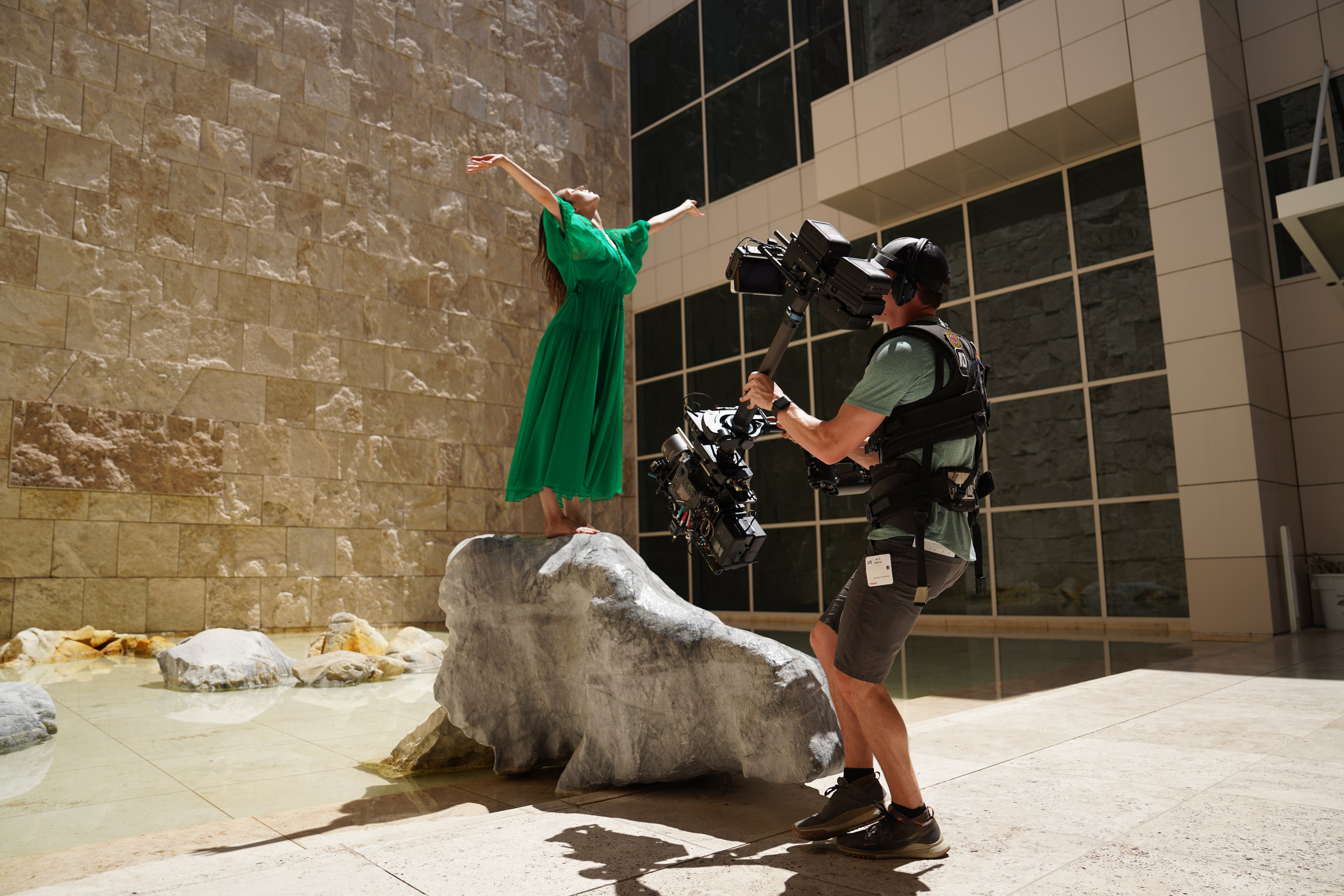
Getting the chance to shoot at the Getty Center opened the door for not only interesting compositions but also unique lighting scenarios that would be obstacles for traditional productions.
"The whole place is designed for interesting angles and compositions," Soffer said. "We wanted the piece to serve as the nexus of art, and artists from different disciplines all collaborating together - juxtaposed with the technology of the camera, camera movement, visual language, and architecture."
"It really was an act of creation," Kightlinger added. "There was something poetic about filming in a place where the museum’s architecture itself is a work of art."
With their subject, concept, and location locked in, Soffer and Kightlinger wanted to impose further limitations on their project—an attempt to put as much pressure onto the camera system as possible. But they also wanted to remove any decision-making around the production. The duo just wanted to shoot.
"The first rule we imposed on ourselves," Kightlinger said. "Was that we would shoot it all natural light."
"This was partially logistical but also creative," Soffer added. "We wanted to give ourselves that limitation but also push the camera to the limits of what it's capable of doing."
But after they finished shooting, Soffer and Kightlinger noticed that having the VENICE as their main tool meant they never really felt those limitations.
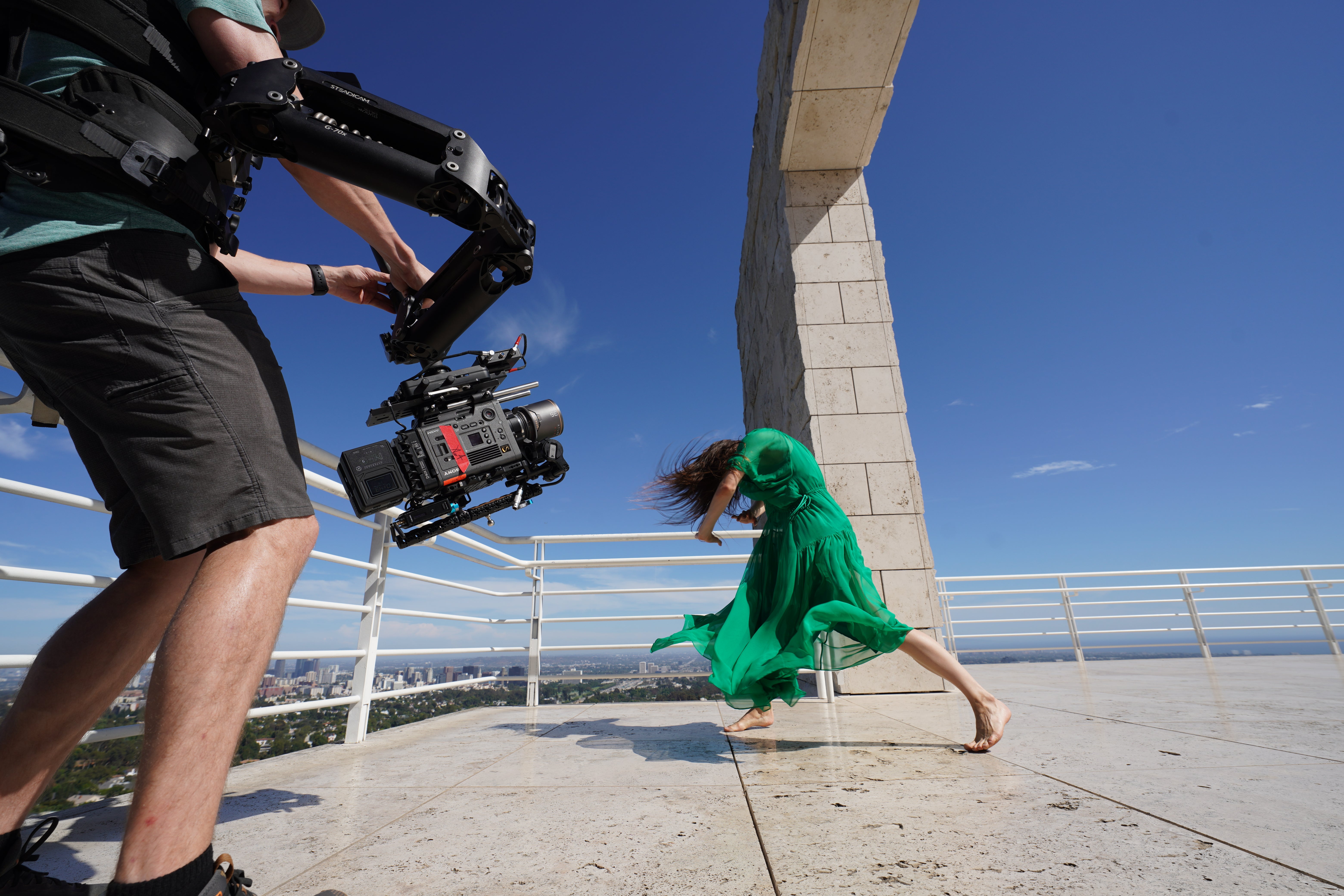
Sony VENICE 2: A Swiss Army Knife
Conceptually, Becoming was a project that condensed all the fundamental aspects of filmmaking into three minutes — story, movement, and visuals. Capturing this density over the course of one day was a feat that put immense pressure on the camera system, not only visually, but technically as well.
The crew consisted of ten people, including Darrell Nash Jr. as the 1st AC, Steadicam Op Daniel Fritz, and CJ Miller as the DIT. Beyond a tripod and their hands, the team only had a prototype of the Blackbird Mantis camera support system.
Without additional lighting or diffusion to support the VENICE 2's 8.6K sensor, the camera had to do all the work without interfering with Kightlinger's direction and Soffer's cinematography.
"To me, the Sony VENICE 2 is really like the Swiss Army knife of camera systems," Soffer said. "We live in such a fortunate time as filmmakers and cinematographers that we have these camera platforms and these tools that are so powerful."
"What's so great about where we are now technologically, and to me, the Sony VENICE 2 exemplifies this, is that you have one camera system that we could strip down and put on a Steadicam and then just show up to a beautiful place with natural light, five crew members, a Steadicam Op, a good focus puller, and ourselves, and just get beautiful imagery."
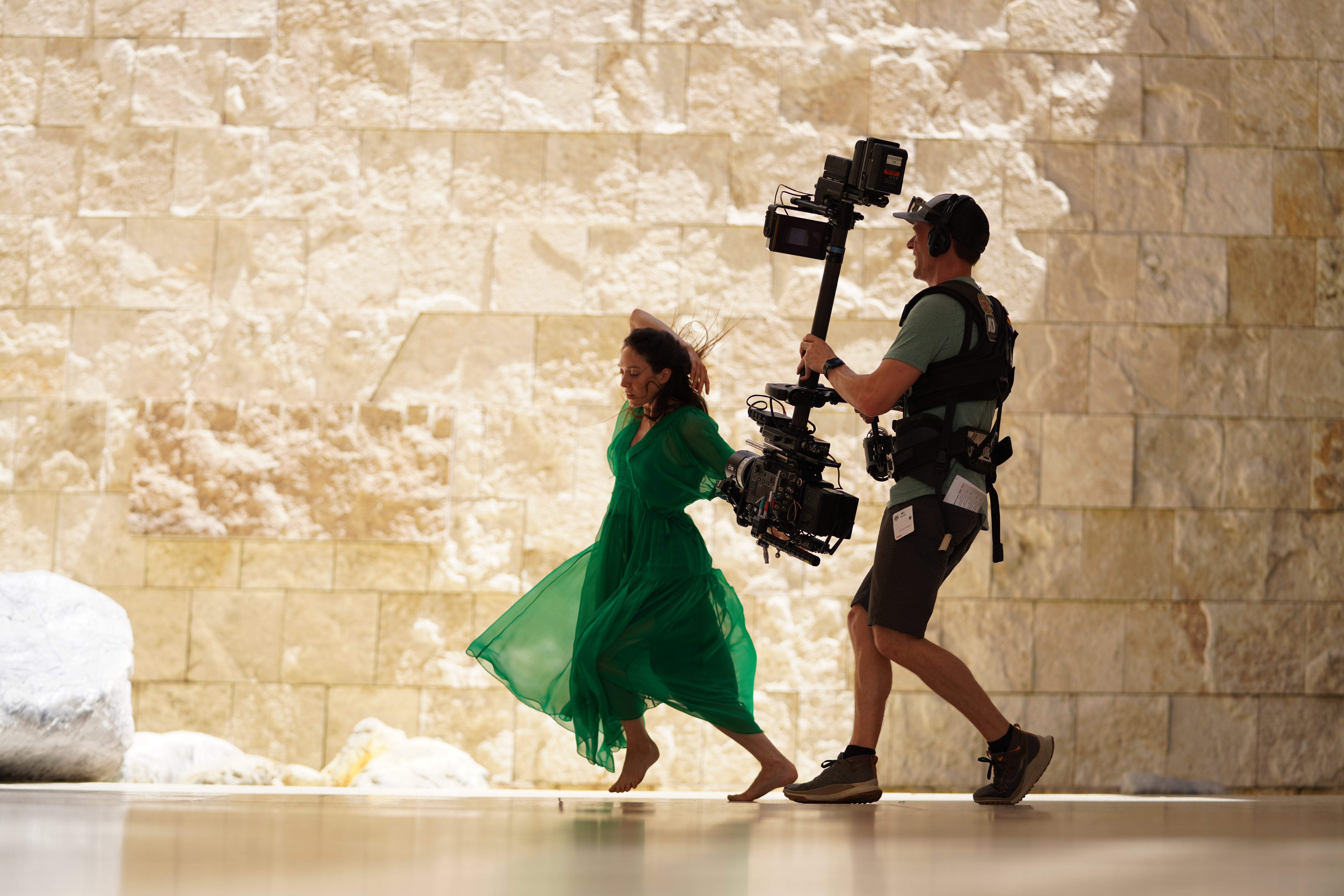
While the entire shoot was all about finding freedom, Soffer and Kightlinger spent several days at the Getty Center planning their shots and plotting the sun so they could be as efficient as possible with the light they had. The morning was spent outside, capturing as many shots as possible. When the sun was at its highest, the team would head inside to shoot within the galleries. Finally, when the sun was about to set, they would head back out to capture golden hour and dusk.
Capturing all these different lighting scenarios required a strong RAW codec and a feature set that would support their lenses choices.
"We wanted to get as much as we could, and we were actually quite ambitious with moving around the space," Soffer explained. "Having the combination of the internal NDs and the Dual ISO sensor fully unlocks any time of day more than any other camera system."
"We were reliant on the X-OCN Sony RAW codec and we know what the camera is capable of in terms of its highlights and its low lights," Soffer said. "There were all these shooting scenarios that we had planned in the shot list and in the conceptualization of the piece that we knew we needed to be able to hit."
And this list of shots was extensive. With no lighting to support them, Soffer and Kightlinger had to move fast. But thanks to the ergonomics of the Sony VENICE 2 and its feature set, their ambition never felt like a burden.
"Because as you're really quickly moving through different lighting scenarios," Soffer said. "We were just riding the ND as we go."
"And then once it gets to a certain point, bumping (the camera) up to 3200 base ISO now unlocks the whole other side of the camera, its low light capabilities, which we utilized quite a bit."
"This is the first time I've worked with a camera where I never noticed the lens changes," Kightlinger said. "I never noticed the ND changes because it's all streamlined."
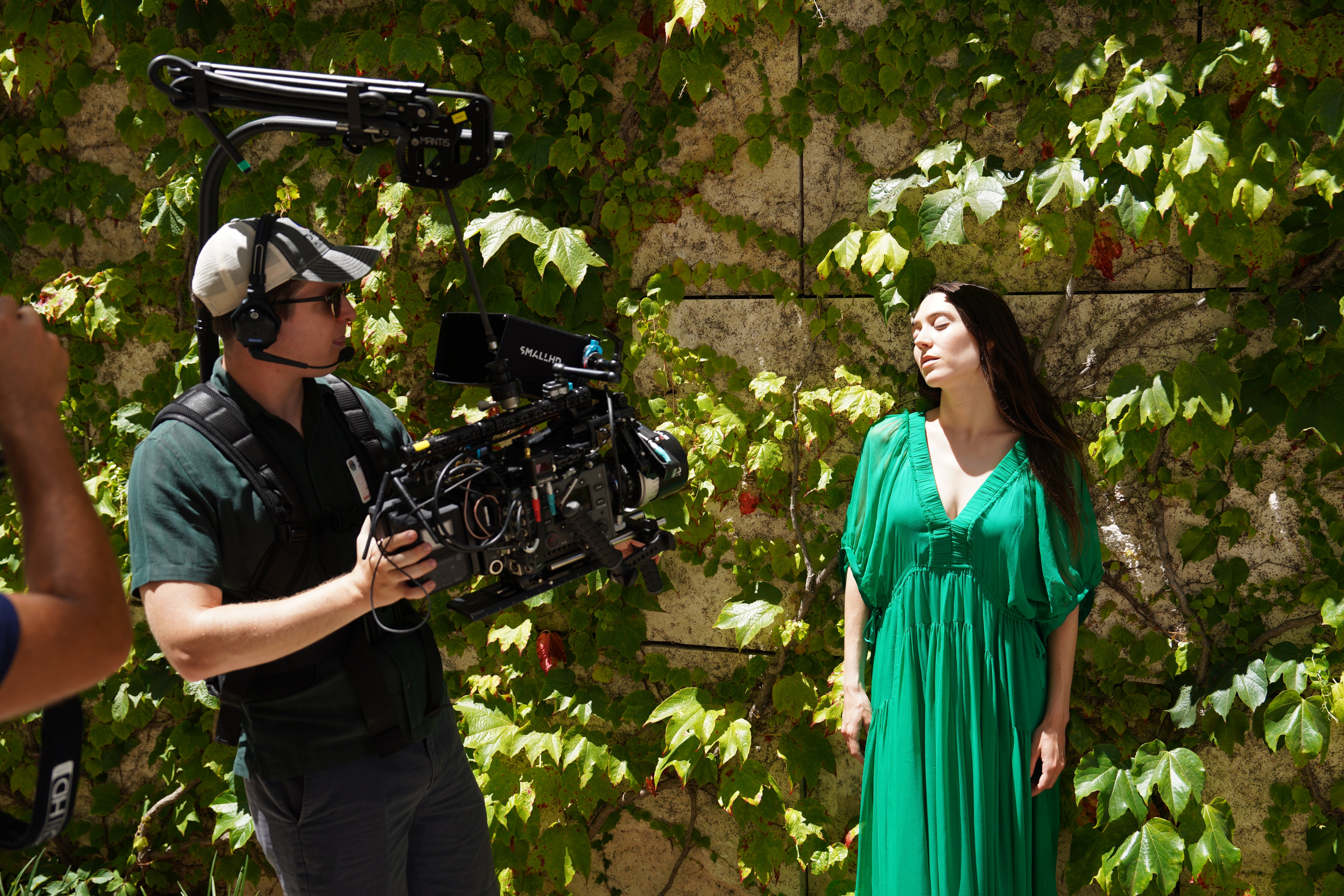
But it wasn't just about lighting for Soffer and Kightlinger. They had to keep up with a contemporary dancer, so the team focused heavily on movement and composition, further adding stress to an already busy day.
"We wanted to shoot slow-mo, we wanted to shoot Steadicam, we wanted to shoot handheld," Soffer said. "We wanted to shoot in low light, and at dusk, and at night, after the sun had set, without any artificial lighting or any movie lights or any support equipment really at all."
Thanks to the camera system, whatever stress they added, the Sony VENICE 2 took it away.
"And we shot (the Sony VENICE 2) in all of those different configurations. Steadicam, sticks, handheld, low mode, regular mode, high speed, low light," Soffer said. "and all with minimal crew and no lighting."
"It's just the camera unlocks all of these different things," Soffer concluded. "It does the technological heavy lifting for you so that you can be free to focus on the creative and the art and the artistry that we're putting in front of the camera."
"This is the most freedom I've felt as a director working with a specific camera format," Kightlinger added. “It allowed us to be artists. It's the ultimate tool for creating art."

With all the limitation the team imposed on themselves the production already felt like it was pushing the camera system to its limits. But Soffer and Kightlinger wanted to add one more layer of pressure with their lens choice.
"We were shooting anamorphic as well with two different formats," Soffer said. "So this is another part of the equation here where having a platform like the VENICE 2 solves a lot of problems."
"We had the Atlas Mercury 1.5X, and we also had the Xelmus APOLLO 2X," Soffer added. “And we were alternating between the two."
Having these two different formats meant that the camera team had to juggle different aspect ratios to ensure that they utilized the full height of the sensor. This is where the precision of the Sony VENICE 2, as Soffer described it, came into play.
"You have this digital camera platform that factors in for all of these different formats and has different sensor crops that you can start with to get the maximum height out of the sensor with the lens combination," Soffer explained. "And we're very easily, with the push of a button, switching between the two of them."
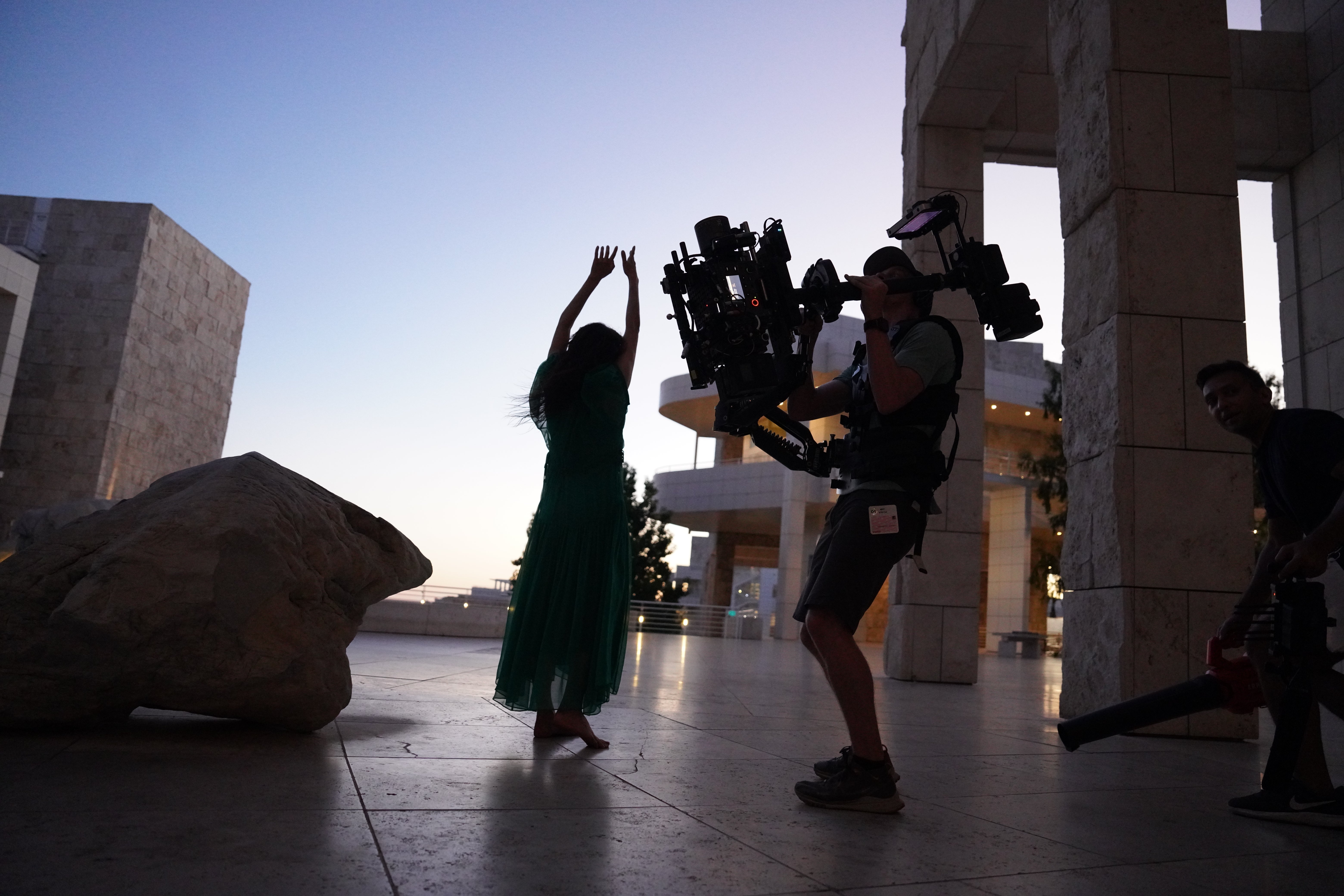
Even with these lenses and their additional weight, the VENICE 2 and the Steadicam operator never had issues keeping up with their subject.
"Our Steadicam Op was almost like a dancer with Daphne as they were working," Kightlinger said. "The camera itself allowed for him to be fluid and to feel the image, feel the emotion happening as it was unfolding."
"The freedom and the nimbleness of that camera allowed us to do those little experimental things," Kightlinger added." And as a director, to be able to work that closely with your actor and with your DP in a little pod like that is a gift."
No matter what conditions the team found themselves in, they were only greeted by freedom. Even when working with the harsh lighting conditions of the LA sun and the distinct reflections caused by the architecture of the Getty Center, the 8.6K sensor within the VENICE 2 managed to handle anything Soffer and Kightlinger threw at it.
"The architecture of the (Getty Center) really harnesses hard light in a really special way," Soffer said. "The way this space is constructed allows for sun to penetrate and create shapes and angles that are very interesting, and we knew that we wanted to feature that."
"I think we, collectively as filmmakers, have neglected hard light as a tool for a long time," Soffer continued. "And I think part of it is because people are afraid of what hard light looks like on digital sensors," Soffer said.
"I think that fear is mitigated by the reality of pointing a really good digital sensor at somebody who's lit with hard light and exposing it properly," Soffer concluded.
"I don't think I've ever seen hard light look so good, so immediately, in frame," Kightlinger added. "It makes me excited to go shoot something insane and intense and just keep tapping into the freedom that it gave me on this shoot."
"I know that I can use the Sony VENICE to capture dramatic scenes and hard light without sweating bullets and worrying that it's going to be unusable," Kightlinger said.
Creating Without Limitation
The dance film that Kightlinger and Soffer shot will forever be remembered for the ideas it expresses and the emotions it evokes. But it’s a film that was crafted using technological tools.
The Sony VENICE 2 is a cinema tool made to support high-end production. But on Becoming, this camera system thrived in an environment where support tools were limited. A small crew can start to feel like a full-production when your tools allow you to create without limitation.

